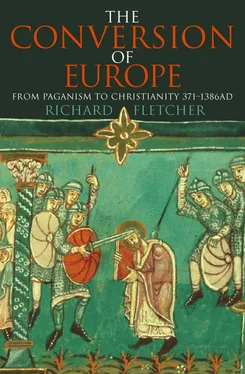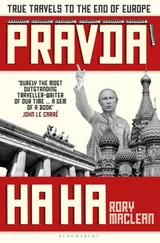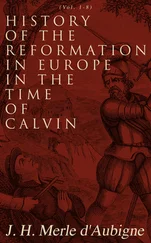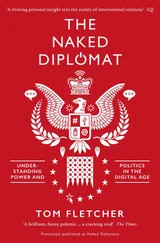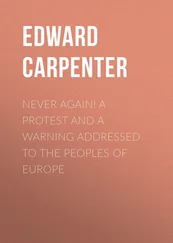Patrick initiated the conversion of the pagan Irish to Christianity and in so doing set an example to his successors in Ireland. A church which looked to Patrick as its founder would come to set a high value upon foreign missionary enterprise. This lay in the future. The immediate task of Patrick’s successors was to continue the work which he had begun. It is unfortunate for us that the century following the floruit of Patrick is the most obscure in the history of Christianity in Ireland. When the surviving evidence becomes more robust, begins to increase, to diversify and to gain in reliability – that is to say, roughly speaking, from the latter part of the sixth century – we find ourselves on the threshold of the great age of the Irish saints, of Irish Christian scholarship and Irish Christian art. Even if we had no other sources of information we should be able to infer that much had happened since the time of Palladius and Patrick. Happily we do have a little information about the growth and consolidation of Christian culture in sixth-century Ireland.
There survives a list of decisions taken by a synod or gathering of bishops known as the ‘First Synod of St Patrick’. 6 This is misleading: the attribution to Patrick comes from a later period and is erroneous. It is impossible to pinpoint the real date of the synod with any degree of accuracy, though a plausible case can be made for somewhere in the first half of the sixth century. The interest of the rulings for us is that they display an Irish church in a society which was still to a great degree pagan. We hear of Christians taking oaths before soothsayers ‘in the manner of pagans’, of Christian clerics standing as legal sureties for pagans, and of pagans who attempt, intriguingly, to make offerings to Christian churches – they are to be refused. We get a sense of Christianity and paganism co-existing and in some sense interpenetrating in the Ireland for which the bishops legislated.
Two of the rulings concern the building of churches and two more seem to assume that episcopal visitation of the churches in a diocese will occur at least from time to time. No surviving church structures in Ireland may be assigned to so early a period as the sixth century. Place-names, however, come to our aid. Several Irish place-names derive from the Old Irish word domnach; for example Donnybrook, Dublin, or Donaghmore in Co. Tyrone. The word domnach is a loanword from the Latin dominicum , meaning ‘a church building’. Now dominicum in this particular sense was current in ecclesiastical Latin only between the years c. 300 and c. 600. It follows that placenames of this type indicate churches built before the seventh century. Another category of Irish names derives from Late Latin senella cella , Old Irish sen chell , meaning ‘old church’; this has yielded modern names such as Shankill. The term sen chell as a place-name element was current by about 670 at latest. It follows that ‘new churches’ were being founded in large numbers in the course of the seventh century; and that the ‘old churches’ which had preceded them were plentiful enough to be a recognizable category of building.
Christian churches imply Christian texts. Patrick was soaked in the Bible, as may be readily seen from passages in his Confessio quoted above, and he would have seen to it that the priests he ordained were too. Familiarity with the Bible and the Christian liturgy presupposed two things: learning Latin and acquiring the technology of writing. Ancient Ireland had a rich oral repertoire of poetry and narrative but early Christian leaders there seem to have been reluctant to translate Christian texts into the vernacular and write them down; possibly the Irish vernacular was held to be tainted by association with paganism. (It should be said that these inhibitions were overcome at a later stage and that in the course of time Ireland developed a rich Christian literature in Old Irish.) Whatever the reason, early Irish converts, unlike Ulfila’s Goths, were not presented with a vernacular Bible. So Patrick’s clerical disciples had to learn Latin. Moreover, they had to learn Latin as a foreign language. The Provencal audiences of Caesarius, the flock of Bishop Martin in Touraine, even the rustics of Galicia, all spoke Latin of a sort. The Irish did not. Learning Latin, for them, meant schools and grammar and a lot of hard work. It was the need to acquire facility in Latin – in an environment which lacked the educational system which was such a central feature of late-antique literary culture in the Roman empire – which made the pursuit of learning an essential feature of Irish Christian communities in the early Middle Ages. Much was to follow from this. Early results were impressive: the first Irishman who has left us a substantial body of Latin writings was St Columbanus. He was born in about 545 and devoted his youth to ‘liberal and grammatical studies’, in the words of his earliest biographer: this would have been in the 550s and early 560s. The Latin of Columbanus was confident, supple and elegant, altogether different from the raw uncouth Latin of Patrick. It is plain that by the middle of the sixth century it was possible in Ireland to acquire a really good Latin education.
The earliest Irish Latin texts that have survived to the present day date from about the year 600. The so-called Codex Usserianus Primus is a copy of the gospels, now preserved in Trinity College, Dublin, written in ink on parchment with a quill pen. The so-called Springmount Tablets, discovered in a peat bog in County Antrim and now in the National Museum of Ireland, are six little wooden tablets measuring about 7.5 x 20 cm, each of which has one face recessed and filled with a light coating of wax; on to the surface of the wax has been incised with a stylus the text of Psalms xxx-xxxii. Materials, script and technique differ as between the codex and the tablets, but in each case the writing is assured and accomplished. These artefacts are the product of an Irish clerical community which took writing in Latin for granted.
These diverse sources, a selection only, have something to tell us of the Christianization of Ireland: new disciplines, new buildings, new learning, new artefacts, were imported and naturalized. And subtly changed in the process? The church imported into Ireland had to adapt itself to Irish conditions. There was nothing surprising about this. Missionary Christianity has to have both resilience and adaptability if it is to be widely acceptable. In the Ireland of Palladius and Patrick, Christianity entered a social world which was rural in its economy, tribal and familial in its organization and pre-literate – ogham excepted – in its culture. These characteristics of Irish society were bound to affect both the way in which Christianity could be presented and the way in which it would be received. Despite the trading and other connections with Roman Britain, the characteristic tell-tales of Roman dominion and civilization were absent: towns, roads, coinage, written law, bureaucracy, taxation. One might reasonably guess that Patrick’s Irish congregations were a good deal less touched by Romanitas than the Tervingi of Dacia among whom Ulfila had ministered.
In Ireland the fundamental political unit – the very word ‘political’ is perhaps something of a misnomer in this context – was the tuath (plural tuatha): a human grouping held together partly by kinship, partly by clientage, in occupation of a shifting zone of territory under the presidency of a dynasty of kings maintained by tribute in kind. The role of the king was religious as well as secular. He had to defend his people and win fame and plunder in warfare with other kings (not unlike Edwin of Northumbria after him, though on a smaller scale); he also had to mediate between his people and the gods to ensure fat cattle and plentiful harvests. Tuatha varied greatly in area and population, but it may safely be said that none was very big for there were perhaps 150–200 of them in early medieval Ireland. There was nothing systematic and nothing static about authority in the Ireland of St Patrick. Like biological cells, tuatha were constantly on the move, splitting, fusing, splitting again, as one king achieved a temporary supremacy over his neighbours only to lose it after a few years.
Читать дальше
